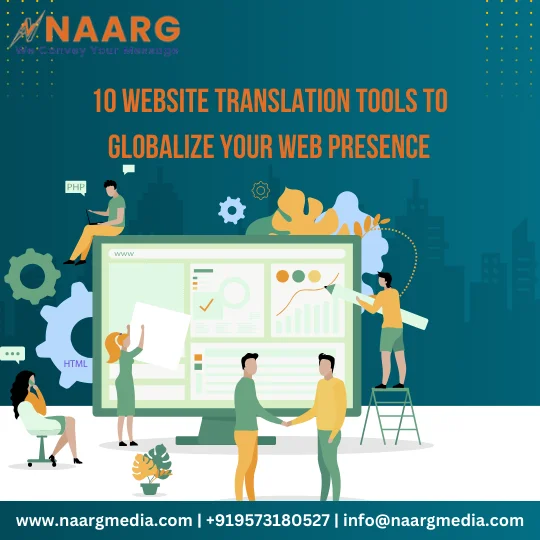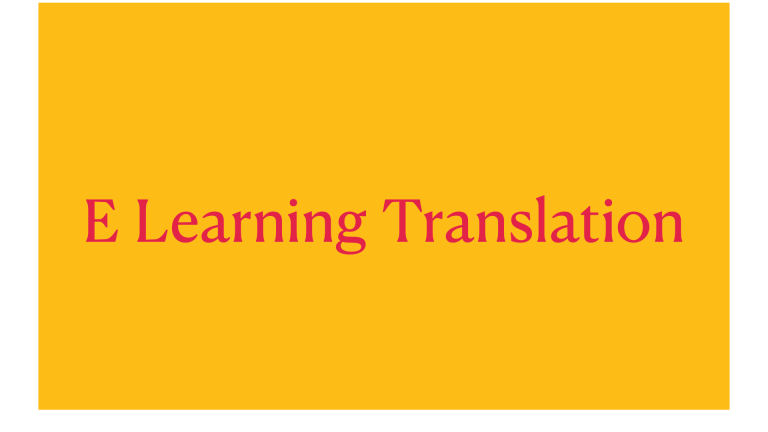Whether you are a multinational corporation, an e-commerce entrepreneur, or a blogger with a global audience, expanding your online presence beyond linguistic barriers is crucial. Expanding your online presence across borders is not just a luxury; it’s a strategic imperative. With the advent of these website translation tools, breaking through these barriers has become easier than ever.
These website translation tools offer indispensable solutions to bridge language gaps and reach your global audience effectively. But the problem here arises: which translation tools should you use? As you know, there are so many translation tools out there. It becomes difficult to choose the perfect translation tool that fits your business.
So, to make your work easier, we have compiled a list of 10 website translation tools to globalize your web presence in the global market. So, whether you are aiming to enhance the user experience, boost sales, or simply expand your readership, these website translation tools will equip you with the means to navigate this multilingual landscape with ease.
So, let’s get started.

Importance of Website Translation
The first question that comes to mind when we think about the importance of website translation is: Why do we even need to translate our website? After all, many people know English to some extent, and this data also shows that English accounts for 25% of the online content on the Internet. So, why bother translating your website? If you are also thinking the same, then let’s look at the statistics more closely.
There is no doubt that English is the dominant language, but we cannot overlook the fact that 50% of the share is covered by other languages. Chinese accounts for roughly 19% of the share, followed by Spanish. These statistics are more than enough to help you understand the importance of website translation. By translating your website content into multiple languages, you can effectively reach new markets. Attract international customers, and build trust with your customers who prefer to engage in their native language.
Moreover, website translation is not just about linguistic accessibility but also about cultural relevance. Also, adapting your content to resonate with preferences, local customs, and idioms will demonstrate your respect for diverse cultures. And that will help you enhance the overall user experience of your website. Ultimately, investment in website translation is a strategic decision that can drive growth, foster global connections, and position your business for success in this globalized world.
Key Features to Look for in Translation Tools
While selecting a translation tool, it is crucial to consider several factors to ensure that it meets your business needs effectively. Some of the key features to look for in translation tools are listed below:
1. Language Support
Always look for a translation tool that supports a wide range of languages, including those relevant to your target audience. Also, these tools should offer accurate translations for common and less widely spoken languages.
2. Translation Accuracy
When it comes to translation, accuracy is paramount in any translation tool. So, always choose a tool that employs machine learning techniques and advanced algorithms to provide precise and accurate translation while preserving the original meaning and tone of the content.
3. Customization Options
A good translation tool should have a customization option to adapt translations to your specific needs. So, always look for features like the ability to customize terminology, style, and tone to maintain consistency across your website.
4. Multilingual SEO support
Always select a translation tool that optimizes your translated content for search engines by selecting a translation tool that offers built-in support for multilingual search engine optimization (SEO). So, ensure to look for features like customizable meta tags, URL structures, and hreflang attributes to improve visibility in international search results.
5. Collaboration Features
If you are working with a team of professional translators or editors, then collaboration features are indispensable. So, choose a translation tool that enables real-time collaboration, version control, and workflow management to streamline the translation process and ensure consistency across the translations.
Considering these key features when selecting translation tools will help you choose the right solution to effectively translate and localize your website and reach a global audience with more confidence.
Top 10 Website Translation Tools
We have listed below the top 10 website translation tools that can help you expand your global reach and connect with your target audience around the world.
1. Google Translate
It is a free and widely used translation tool offering translations for over 100 languages. While Google Translate has some limitations, it remains the top contender among website translation tools due to its versatile features and accessibility. It provides quick and easy translation for your website content. Google Translate provides flexibility by allowing you to select your preferred input method, keyboard layout, or even handwriting output for translation.
2. Microsoft Translator
It offers translation services for websites, documents, and apps. It supports a wide range of languages and provides customizable translation options that primarily include the ability to integrate with Microsoft Office applications. It stands out as an exceptional online translation software offering robust capabilities to cater to a diverse range of language translation needs. With support for over 50 languages, Microsoft Translator empowers you to bridge linguistic barriers effectively.
3. DeepL
This translation tool is emerging as a formidable contender in the realm of online translation. The DeepL translation tool has quickly gained recognition for its exceptional accuracy, high-quality translations, and intuitive user interface. It is available as both a free online tool and a paid desktop application. Also offers versatility and accessibility to users across various platforms, whether you are translating documents, web content, or communication materials. Making it a go-to resource in the online translation landscape.
4. Crowdin’
It is a collaborative translation management tool that helps businesses and development and project management teams localize their products and website content. Also offers features like translation memory, glossary management, and real-time collaboration tools to streamline the translation process. Crowdin simplifies the process of managing translations, allowing you to effortlessly oversee your content localization endeavors. Crowdin also extends a free plan ideal for smaller-scale projects that encompass up to 100 files. Its user-friendly interface and scalable solutions make CrowdIn an invaluable asset for achieving seamless multilingual content management.
5. Bing Translator
Bing is Microsoft’s online translator that offers a user-friendly platform with robust capabilities designed specifically to facilitate seamless language translation. It supports text input of up to 5,000 characters, and Bing ensures versatility for a wide range of translation needs. Bing’s intuitive interface simplifies the translation process, enabling you to effortlessly navigate the tool. This translation tool is renowned for its instant translations across various languages and dialects, making it stand out as one of the premier website translation tools on the market.
6. Smartling
It is a comprehensive translation management platform that helps businesses localize their websites and digital content. It also offers advanced features like translation memory, glossary management, and automated workflows to streamline the translation process. Whether it is about managing website localization or digital marketing campaigns, smart, comprehensive tools will equip your business with the resources you need to navigate the complexities of global communication seamlessly.
7. Reverso
It stands out as a user-friendly language translator that simplifies the translation process with its intuitive interface and advanced technology. Unlike other translation tools, Reverso eliminates the need for manual clicking by automatically initiating the translation engine as soon as you start typing. Reverso ensures precision and accuracy in translations, as it is powered by AI and employs neural machine translation (NMT). The range of supported languages in Reverso may be limited compared to platforms like Google Translate, but it compensates with superior accuracy.
8. TranslateDict
It emerges as a reliable online translator on the web that caters to individuals who prefer simplicity and familiarity in their translation experience. While there is a debate, some users perceive its interface as primitive or outdated. TranslateDict offers convenience for those resistant to change. This platform is quite straightforward; users simply type their text or upload a document and then click the translate button. Also, users have the option to manually select from 50 supported languages if needed.
9. SDL Trados
It is a powerful translation software used by professional translators and project management and localization teams. SDL Trados offers advanced translation memory and terminology management features, as well as integration capabilities with popular content management systems. SDL offers powerful tools and a user-friendly interface and remains a go-to choice for translation professionals seeking unparalleled precision and productivity in their work.
10. Translate.com
It offers professional translation services for documents, websites, and more. Translate.com provides access to a global network of translators and offers customizable translation solutions that are tailored to your specific needs. Translate.com is different from other translation tools because of its commitment to providing customizable translation solutions tailored precisely to individual requirements. Whether it is adapting your website content for your international audience or translating intricate documents, Translate.com offers flexible solutions designed to meet specific needs effectively.
Best Practices for Implementing Website Translation
For a seamless and effective localization process, implementing best practices is essential. Listed below are some of the best practices to consider:
1. Define your goals
You need to clearly define your objectives for website translation. Make sure to determine which markets you want to target, what languages you need to support, and what content requires translation.
2. Choose the right translation method
It is best to decide whether you will use machine translation, human translation, or a combination of both. Machine translation offers speed and cost-effectiveness, while human translation ensures accuracy and cultural sensitivity.
3. Prioritize Content
Always prioritize the translation of key pages and content that are essential for your target audience, like product descriptions, pricing information, and contact details.
4. Monitor Performance
Make sure to monitor the performance of translated content, including website traffic, conversion rates, and engagement metrics, to evaluate the effectiveness of your localization efforts and make adjustments as needed.
Following these practices, you can effectively implement website translation to reach and engage with global audiences, drive traffic and conversions, and achieve your business objectives.
Whether you need website translation or localization services, Naarg covers it all and much more! Get in touch with us today!

